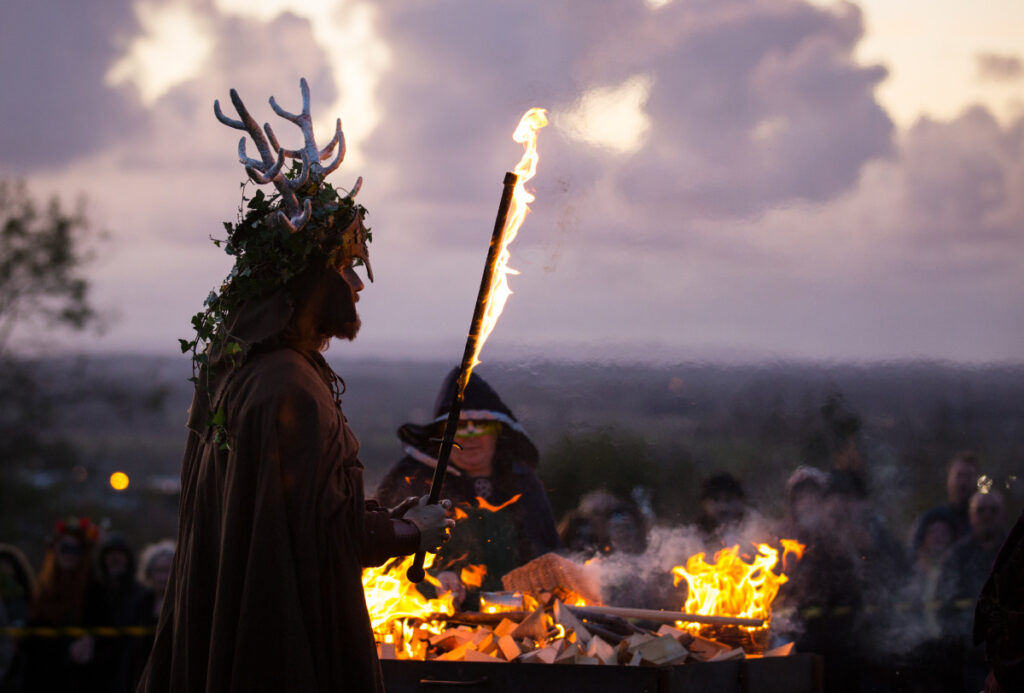By Raj Vedam
The Bhagavadgita describes the 6 month southern course of the sun, Dakshinayana, as the path of the Pitrus. This period begins June 21st, and ends Dec 21st, with a midpoint-equinox at Sept 22nd.
Hindus traditionally observe Pitru-Paksha soon after the Sept 22nd equinox, when the Sun is in “deep Pitru territory”, on the nearest Amavasya to Bhadrapada, called Mahalaya Amavasya.
The ancient Celts of Britain, with deep remembrance of their Vedic ancestral practices, observed a feast for ancestors, approximately halfway between the Sept 22nd equinox and the Dec 21st solstice, now normalized to Oct 31st, from sunset on Oct 31st to sunrise on Nov 1st.
On this day that they called “Samhain”, they would leave offerings for their ancestors, and believed it to be a time when one could commune with the spirits. This was a festival marked with great celebrations by people who would come to be known pejoratively as “Pagans”.

Christianity which saw this as a great festival of the Pagans, appropriated this practice from the 9th century onward, marking Nov 1st as “All Saints Day” and Nov 2nd as “All Souls Day”, hijacking the Vedic festival of remembrance of ancestors to that of dead Christian saints and faithful. Oct 31st has now come to be called Halloween.
Most urban Indians who have become ignorant/deracinated and don’t observe Pitru-Paksha, now observe Halloween in India.
Rajiv Malhotra referred to a “Pizza Effect” as a home-grown practice coming back re-designed and re-packaged. Halloween surely fits the bill.
Published earlier by author Raj Vedam in The Appropriation of Samhain. The Bhagavadgita describes the 6 month… | by Raj Vedam | Medium
*Picture Source: By Unknown author – https://www.history.com/topics/holidays/samhainhttps://www.mentalfloss.com/article/87234/6-spooky-facts-about-samhain, CC BY-SA 4.0, https://commons.wikimedia.org/w/index.php?curid=124469265
![]()
- Book Review: “Not Just Kohinoor” by Amit Agarwal - October 4, 2025
- Assam: Muslim youths abducted two minor Hindu girls and gang-raped them; one died - July 7, 2023
- Kerala YouTuber arrested for protesting against Muslim restaurant owner for using Hindu religious symbols for duping Hindus - July 5, 2023

